| Name |
Title |
Aims |
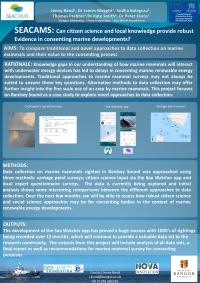 |
Can citizen science and local knowledge provide robust Evidence in consenting marine developments? |
To compare traditional and novel approaches to data collection on marine mammals and their value to the consenting process |
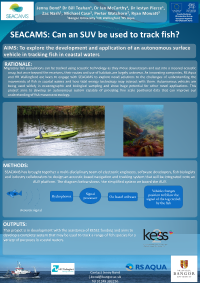 |
SEACAMS: Can an SUV be used to track fish? |
AIMS: To explore the development and application of an autonomous surface vehicle in tracking fish in coastal waters |
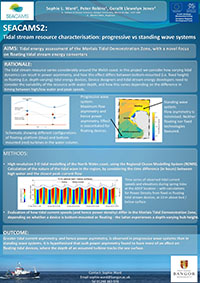 |
Tidal stream resource characterisation: progressive vs standing wave systems |
Tidal energy assessment of the Morlais Tidal Demonstration Zone, with a novel focus on floating tidal stream energy converters |
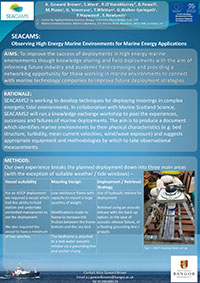 |
Observing High Energy Marine Environments for Marine Energy Applications |
To improve the success of deployments in high energy marine environments though knowledge sharing and field deployments with the aim of informing future industry and academic field campaigns and providing a networking opportunity for those working in marine environments to connect with marine technology companies to improve future deployment strategies. |
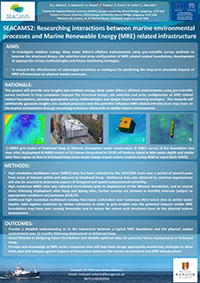 |
Researching interactions between marine environmental processes and Marine Renewable Energy(MRE) related infrastructure |
To investigate medium energy, deep water(60m+) offshore environments using geo-scientific survey methods to improve the structural design, site selection and array configuration of MRE related seabed foundations, development of appropriate survey methodologies and future monitoring strategies. |
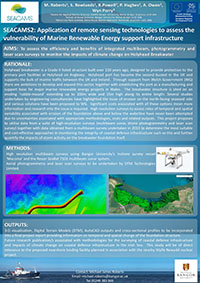 |
Application of remote sensing technologies to assess the vulnerability of Marine Renewable Energy support infrastructure |
To assess the efficiency and benefits of integrated multibeam, photogrammetry and laser scan surveys to monitor the impacts of climate change on Holyhead Breakwater |
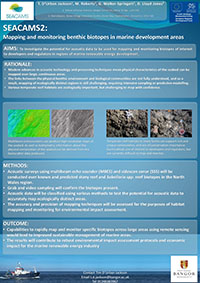 |
Mapping and monitoring benthic biotopes in marine development areas |
To investigate the potential for acoustic data to be used for mapping and monitoring biotopes of interest to developers and regulators in regions of marine renewable energy development. |
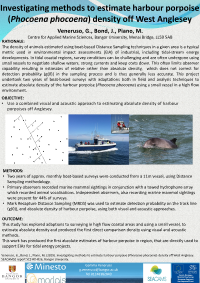 |
Investigating methods to estimate harbour porpoise (Phocoena phocoena) density off West Anglesey |
Use a combined visual and acoustic approach to estimating absolute density of harbour porpoises off Anglesey. |
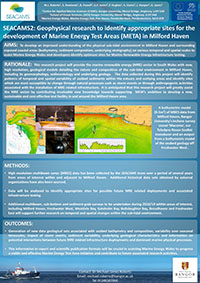 |
Geophysical research to identify appropriate sites for the development of Marine Energy Test Areas (META) in Milford Haven |
To develop an improved understanding of the physical sub-tidal environment in Milfoed Haven and surrounding exposed coastal areas (bathymetry, sediment composition, underlying startigraphy) on various temporal and spatial scales to assist Marine Energy Wales and developers identify optimum sites for Marine renewable energy infrastructure testing |
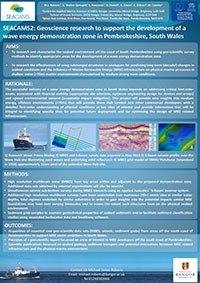 |
Geoscience research to support the development of a wave energy demonstration zone in Pembrokeshire, South Wales |
To research and characterise the seabed environment off the coast of South Pembrokeshire using geo-scientific survey methods to identify appropriate areas for the development of a wave energy demonstration zone. |
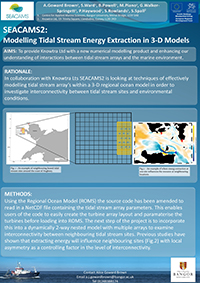 |
Modelling Tidal Stream Energy Extraction in 3-D Models |
To provide KnowtraLtd with a new numerical modelling product and enhancing our understanding of interactions between tidal stream arrays and the marine environment. |
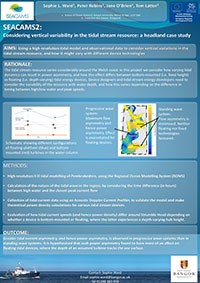 |
Considering vertical variability in the tidal stream resource: a headland case study |
Using a high resolution tidal model and observational data to consider vertical variations in the tidal stream resource, and how it might vary with different device technologies |
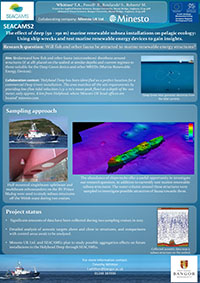 |
Will fish and other fauna be attracted to marine renewable energy structures? |
The effectof deep(50 -150 m) marine renewable subsea installations on pelagic ecology: Using ship wrecks and test marine renewable energy devices to gain insights. |
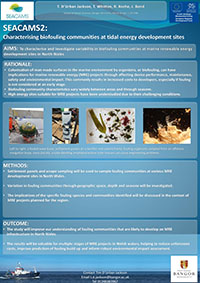 |
Characterising biofouling communities at tidal energy development sites |
To characterise and investigate variability in biofouling communities at marine renewable energy development sites in North Wales |
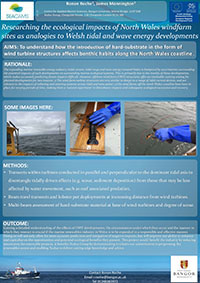 |
Researching the ecological impacts of North Wales windfarm sites as analogies to Welsh tidal and wave energy developments |
To understand how the introduction of hard-substrate in the form of wind turbine structures affects benthic habits along the North Wales coastline. |
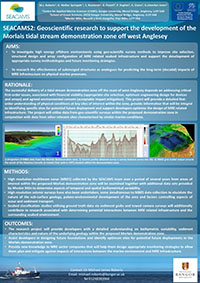 |
Geoscientific research to support the development of the Morlais tidal stream demonstration zone off west Anglesey |
To research the effectiveness of submerged structures as analogues for predicting the long-term(decadal) impacts of MRE infrastucture on physical marine processes. |
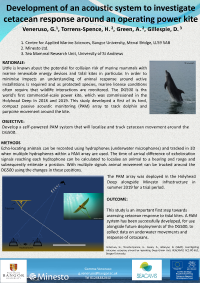 |
Development of an acoustic system to investigate cetacean response around an operating power kite |
Develop a self-powered PAM system that will localise and track cetacean movement around the DG500. |
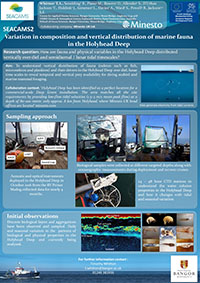 |
Variation in composition and vertical distribution of marine fauna in the Holyhead Deep |
How are fauna and physical variables in the Holyhead Deep distributed vertically over diel and semidiurnal / lunar tidal timescales? |
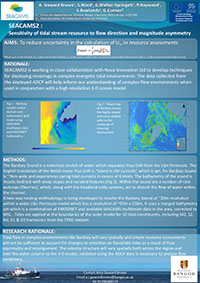 |
Sensitivity of tidal stream resource to flow direction and magnitude asymmetry |
SEACAMS2 is working in close collaboration with Nova Innovation Ltd to develop techniques for deploying moorings in complex energetic tidal environments. The data collected from the deployed ADCP will help inform our understanding of complex flow environments when used in conjunction with a high resolution 3-D ocean model |
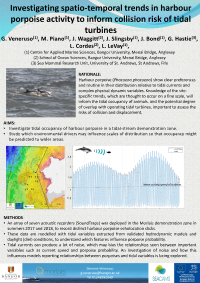 |
Investigating spatio-temporal trends in harbour porpoise activity to inform collision risk of tidal turbines |
Investigate tidal occupancy of harbour porpoise in a tidal-stream demonstration zone. |
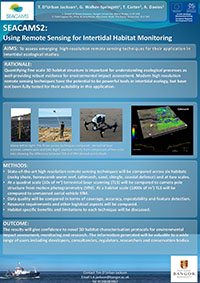 |
Using Remote Sensing for Intertidal Habitat Monitoring |
To assess emerging high resolution remote sensing techniques for their application in intertidal ecological studies. |
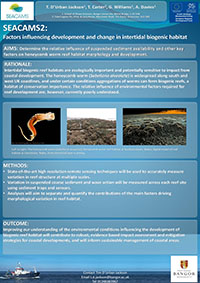 |
Factors influencing development and change in intertidal biogenic habitat |
Determine the relative influence of suspended sediment availability and other key factors on honeycomb worm reef habitat morphology and development. |